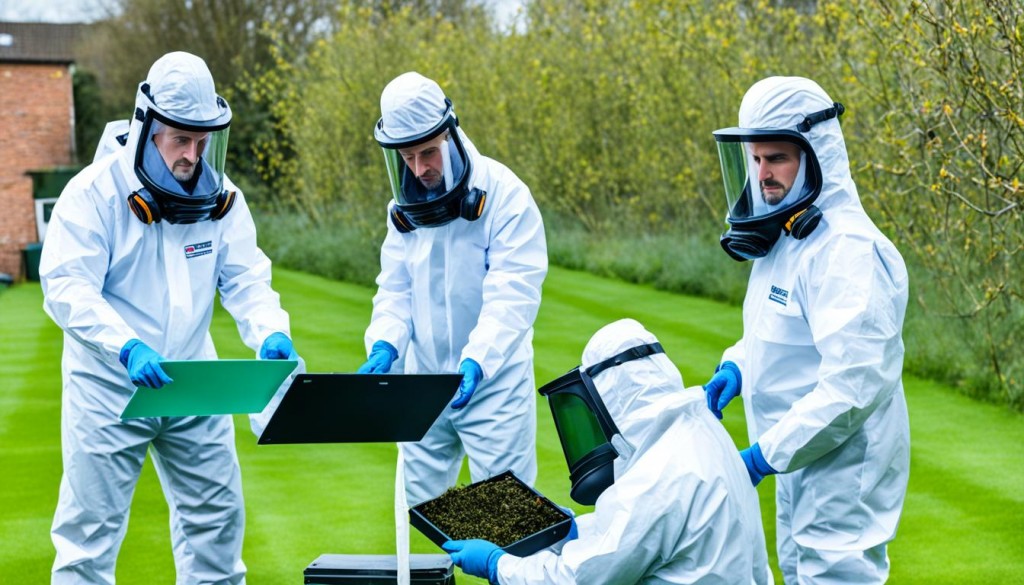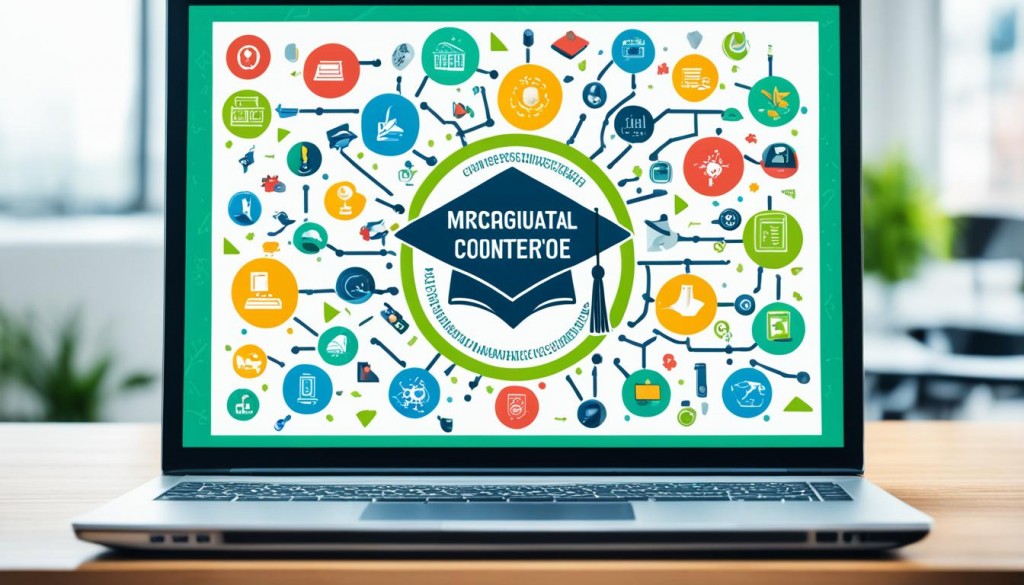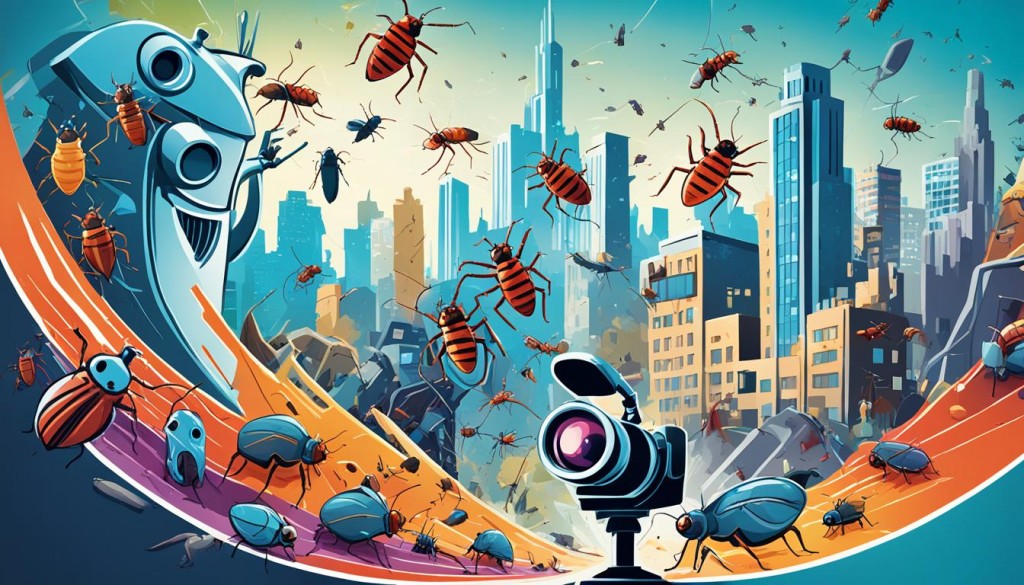July 28, 2025
The world of health and safety at work is complex, imposing a major challenge on managers, and in particular on HSE managers : receive regular and effective training in current regulations, and Good Manufacturing Practices (GMP) .Recently, a lack of up-to-date and effective training has been felt in several industries, that of up-to-date and effective training in Pest Control. Traditional training courses, which are often expensive and time-consuming, no longer correspond to current requirements. This is where microlearning has taken hold in its effectiveness, revolutionizing learning by Pest Control, offering a solution adapted to modern needs.Sinfony, leader in digital training, proposes an innovative approach. It combines short online modules with on-the-job support, offering tailor-made learning for HSE managers. This method makes it possible to quickly acquire Good practices in Pest Control, while reducing costs.This solution of Blended Learning meets the requirements of HSE professionals. It offers flexibility and efficiency, two major assets in a constantly evolving sector. Managers can thus be trained in the techniques of pest control without disrupting their busy schedules.
Pest control training is essential for HSE managers. It addresses key areas such as Deratization, the disinsection and phytosanitary treatments. These skills are vital to meet contemporary health and regulatory challenges.

HSE managers must master the new pest control regulations. This regulation imposes rigorous standards for the extermination of pests. It aims to protect public health and the environment. Appropriate training is crucial to comply with these legal requirements.
Adequate pest control management reinforces workplace safety. It reduces the health risks associated with pests. In addition, it increases productivity by avoiding disturbances caused by infestations. Trained HSE managers can develop effective prevention strategies.
Extermination methods are evolving rapidly. New techniques of Deratization and disinsection emerge regularly. HSE managers need to stay up to date with this progress. Continuing training allows them to adopt the most effective and environmentally friendly practices.
“Pest control training is an investment in the health, safety and productivity of the company.”
Faced with these challenges, Sinfony offers an innovative solution. It offers digital training and field support. This approach makes it possible to quickly train all employees in best practices, at a lower cost.
Microlearning is transforming the digital training by offering a Fast learning and effective. It divides content into short modules, making it easier to assimilate key information.

The approach Blended Learning merges online training with on-the-ground support. It ensures maximum flexibility while allowing knowledge to be put into practice in practice.
Microlearning represents an innovative solution to expensive technical training. It makes it possible to quickly train all employees in best practices, at a lower cost.
Microlearning adapts perfectly to the constraints of HSE managers, offering them flexible and effective continuous training.
By combining digital modules and field support, this approach guarantees an optimal transfer of skills. This allows learners to immediately apply their new knowledge in their work environment.
In a world where technology is rapidly evolving, the LifeScience and chemical sectors face unique pest control challenges. The training of professionals in these fields requires an approach that combines technical expertise, strict regulations and the human factor. This is where micro-learning and blended learning come in, revolutionizing pest control training.
Microlearning, characterized by short targeted learning sessions, is particularly suited to the needs of pest control professionals in the LifeScience and chemical industries.According to a study in the Journal of Applied Psychology, microlearning can increase learning efficiency by 17% compared to traditional methods [1] .In the context of pest control, microlearning allows:
Dr. Emily Chen, a researcher in digital pedagogy at Stanford University, explains:“Microlearning allows professionals to stay up to date without disrupting their daily work. This is especially valuable in areas where accuracy and compliance are paramount.”
Blended learning, which combines online and face-to-face learning, offers a holistic approach that is particularly suited to the requirements of pest control in the LifeScience and Chemistry sectors.A study published in the Journal of Chemical Education has shown that blended learning not only improves theoretical understanding, but also improves learners' practical skills [2] .In the context of pest control, blended learning allows: 1. Online theoretical sessions to cover regulatory and scientific aspects.2. Practical face-to-face workshops to master specific treatment techniques in sensitive environments.3. Virtual simulations to practice managing complex scenarios without risking the environment.Strengthening the human factor
1. Increased adaptability: Professionals can quickly adapt to new regulations or emerging threats.2. In-depth expertise: The combination of theory and practice allows for a deeper understanding of the issues specific to these sectors.3. Enhanced communication skills: Trainings include modules on communication with laboratory or production teams, which is crucial in these environments.4. Ethical decision-making: Complex scenarios are presented to develop the ability to make ethical decisions in delicate situations.Dr. Michael Johnson, an expert in continuing education at the Massachusetts Institute of Technology (MIT), emphasizes: “In such sensitive areas as life sciences and chemistry, pest control cannot be reduced to the application of protocols. Professionals who can understand global issues and interact effectively with various experts are needed. Blended learning, enriched with micro-learning, is ideal for developing these skills.”
Pioneering companies in the LifeScience and Chemical sectors have already adopted these innovative approaches. BioTech Solutions, a leading biotechnology company, reported a 40% reduction in pest-related incidents in its laboratories after implementing a blended training program with micro-learning modules [3].
Microlearning is revolutionizing training in pest management for HSE managers. This innovative approach perfectly meets the challenges of the sector, offering unparalleled flexibility and efficiency.
HSE managers can now access short modules on rodent elimination or insect protection, wherever they are. This flexibility allows for continuing education without disrupting their daily responsibilities in the hygiene and sanitation service.

Microlearning optimizes learning time by dividing training into short and targeted sessions. Managers quickly assimilate the new techniques of pest management, without sacrificing their productivity.
In a field that is constantly evolving, microlearning makes it easier to update knowledge. HSE managers stay up to date with the latest regulations and innovations in insect protection and rodent elimination.
“Microlearning in pest control allows us to train our teams effectively while respecting operational constraints. It's a real gain for our hygiene and sanitation service.”
This innovative approach transforms training into pest control, making it more accessible and adapted to the specific needs of HSE managers.
Microlearning pest control training offers numerous advantages to HSE managers. This innovative method adapts to the daily challenges of eradicating pests. The flexibility of microlearning allows managers to learn about urgent issues. For example, the dangerous flying cockroach. They quickly acquire the knowledge they need to manage these critical situations, without disrupting their busy schedules. Faced with the rat problem, microlearning ensures that regulations are regularly updated. Managers stay up to date with the latest standards, ensuring the compliance of their institution. Microlearning offers targeted modules for restaurant pest treatment. Managers effectively learn techniques specific to this sector. This ensures food safety and customer satisfaction.BenefitImpact on HSE managersLearning flexibilityEffective emergency managementRegulatory updateAssured complianceSpecialized modulesStrengthened sector expertiseContinuous learningContinuous learningRapid adaptation to new techniquesMicrolearning in pest control reinforces the professional effectiveness of HSE managers. It allows them to remain at the forefront of harmful eradication practices. In addition, it optimizes their training time.
Pest control training for HSE managers combines theory and practice. Sinfony offers a Blended Learning solution, combining digital modules and field experience. This approach aims to combat Super pests in an effective manner.
Online courses provide a solid theoretical foundation on Super pests and treatment methods. This knowledge is then practised on site. HSE managers thus learn to identify flying cockroaches in real situations.
Rigorous monitoring assesses learners' progress. Interactive quizzes and practical scenarios test the assimilation of knowledge. This includes Super pests and the techniques of pest control.Assessment MethodFrequencyObjectiveOnline QuizsWeeklyCheck Theoretical KnowledgeCheck Theoretical KnowledgePractical Exercises MonthlyEvaluate Field Application Intervention ReportQuarterlyAnalyze Global Pest Management
Every business has unique pest control challenges. Sinfony training is adapted to the particularities of each site. It takes into account the types of pests and local environmental constraints for effective treatment. This tailor-made approach allows HSE managers to acquire skills applicable to their professional context. It optimizes the effectiveness of pest control in their business.
Pest control training for HSE managers is evolving towards microlearning. This method offers an effective solution to time and budget challenges. It makes it possible to quickly acquire Good Practices in pest control. Sinfony innovates by offering a mix of digital training and support in the field. This Blended Learning meets the specific needs of businesses. It provides rapid and economical training for all employees on a site. By adopting this method, HSE managers optimize pest management. They increase the security and productivity of their business. This effective training in pest control is becoming a major asset in the face of current health and regulatory challenges.
Pest control, or pest control, includes methods and techniques for controlling and eliminating pests. This includes rodents, insects, and other unwanted organisms. These actions aim to protect a specific environment.
Specialized pest control training is crucial for HSE managers. It guarantees health safety and compliance with regulatory standards. In addition, it ensures a healthy work environment and promotes productivity. It also makes it possible to master the latest pest control techniques.
Microlearning represents a method of continuous training with short and targeted modules. These modules are designed to be accessible and easy to learn. This approach optimizes learning time and allows knowledge to be regularly updated.
Microlearning offers greater flexibility and accessibility for pest control training. It optimizes learning time and facilitates the updating of knowledge. In addition, it adapts to the specific constraints of each site.
Sinfony offers a Blended Learning approach that combines modules from digital training and microlearning with support in the field. This method makes it possible to put into practice the knowledge acquired online in a real context. It adapts to each situation.
Sinfony sets up a process for monitoring and evaluating the skills acquired by HSE managers. This process makes it possible to verify the effectiveness of learning. It also identifies reinforcement needs for optimal training.
Des formations conçues par des experts métier, régulièrement mises à jour pour coller aux exigences terrain. Découvrez nos modules les plus suivis et les mieux notés par les professionnels.

Formation complète sur les Bonnes Pratiques de Fabrication (BPF) adaptée à votre profil professionnel dans l'industrie pharmaceutique et vétérinaire.

Maîtriser les techniques et les procédures essentielles.

Les procédures essentielles d'hygiène et de sécurité pour le personnel...